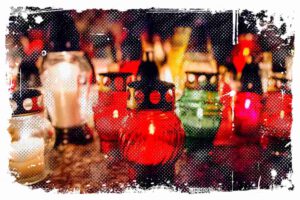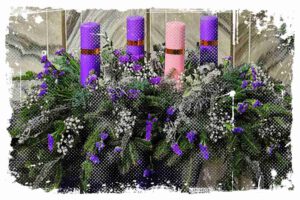Understanding culture in Poland is like unwrapping a story, a story unique to a particular community. So, what’s Polish story, you ask? It’s a diverse tapestry, interwoven with tangible and intangible elements distinct to its people. This includes values, norms, beliefs, traditions, and various artistic creations that set a nation apart from the rest.
In our tale of culture, these elements aren’t random. They are the results of historical experiences that echo moments of triumph and defeat. Allow me to explain, these unique national experiences are cherished and remembered, narrated to younger generations who then learn to identify with their nation.

Polish Culture – Colorful Canvas
If you’re curious about Polska’s national culture, I can tell you, it’s rich and diverse. It’s not just one thing or the other, it’s a blend of everything that’s inherently Polish. Here’s what makes it up:
- Literary masterpieces in the Polish language like works of Adam Mickiewicz, Juliusz Słowacki, and Henryk Sienkiewicz
- Traditional cuisine – dishes like pierogi, żur, red borscht, and faworki
- Important places – like Częstochowa, Wawel, and Oświęcim
- National heroes – figures like Jan Paweł II, Tadeusz Kościuszko, and Józef Piłsudski
- Unique holidays and traditions – like Boże Narodzenie (Christmas), and wedding ceremonies.
It’s worth to say, these threads of culture are continuously preserved in Polska. Schools ensure students engage with Polish artistic and literary creations. Furthermore, I am convinced, you’ll likely find cultural organizations in cities promoting Polish culture, teaching traditional dances like mazurek, oberek.
↳ PRO TIP: Do you like traveling? Then before you buy any ticket or book an attraction, check if it's available in this worldwide Viator Database. You may save a lot of money and time. No need to thank me :)

It is like an unending festival, where everyone participates and the culture continues to thrive, making the Polish culture alive and ever-evolving. If you ever find yourself being there, you need to know this – Polska is a country that truly honors its roots while embracing the new.
What Makes Polish Culture Unique?
Every national culture boasts a specific set of elements, you know. Typically, these elements include:
- Collective beliefs, religions – particularly vital in a religiously unified country.
- Places and events that hold historical significance for the nation, such as places of victorious battles. For Poles, the Baptism of Poland in 966, and the Battle of Grunwald in 1410 hold great importance.
- Artistic works – art and literature from various epochs exhibiting features unique to the nationality.
- A set of customs and values – traditions.
- National heroes – both historical (like Tadeusz Kościuszko) and literary figures.
It’s worth saying, the evolution of national culture plays a key role in state policies. It directly influences citizens’ attitudes, molding the future of the nation in countless ways.

Impact of Polish History on its Culture
Here’s something interesting. The rites and customs in Polska are deeply rooted in Christian religion, which has been present in these lands for over a thousand years. Defending one’s tradition often intertwined with defending one’s faith.
If you need to know who adheres most to traditions, look no further than the rural population. I think it is worth saying, they resist novelty and changes occur at a slower pace in rural areas, ensuring tranquility and monotony.
Global changes like wars, and being exploited by various rulers over centuries, led to stagnation. Multigenerational families residing in small cottages, shared work and time spent together facilitated human communication.

What else could a peasant do after a hard week’s work? His only „entertainment” could be attending a church festival. Be it a wedding, funeral, All Souls’ Day, or Christmas, the most important task was to conduct ceremonies „as taught by the fathers”. Poles are a pious nation, and faith certainly helped them in hard times.
The history of a country plays a fundamental role in shaping its society. I am convinced, during times of threat or loss of state sovereignty, poets join the fight for freedom and preserving national values. Patriotism pervades literature, often advocating for freedom at any cost – even if it means sacrificing one’s life.
The literature engages with current life themes, and authors take on a new role – calling for resistance and mobilizing the entire nation. The theme of freedom appears in numerous works, often presented as the paramount goal of life. The concept of homelnad is understood not only in terms of civic service, but also in emotional and affectionate terms.

Romantic and contemporary literature often addresses national liberation themes, as a response to the loss of independence in 1795, when Poland disappeared from the maps of Europe and only lived in the hearts and minds of Poles. The words of today’s national anthem encapsulate this sentiment: „Jeszcze Polska nie umarła póki my żyjemy” („Poland is not yet lost as long as we live„).
Cultural Landscape Across Different Regions of Poland
Every community creates and performs music indicative of its culture, tradition, and the place it inhabits. Highlanders sing about peaks that touch the sky, coastal inhabitants about the sea, its beauty and also its dangers.
Those from the plains marvel at the vastness and open space. This amalgamation of the landscape, associated work, music, and customs – well, that’s the folklore of a place. I can tell you, it differs across the country.
We refer to an area distinguished by unique folklore characteristics as a region.
Here’s a quick rundown of regions in various parts of Poland:
- In the north (along the Baltic Sea) – Pomerania, Kashubia, Kociewie
- In the south (in the mountains) – Lesser Poland
- In central Poland – Mazovia, Łowicz Region, Sieradz Region, Opoczno Region
- In the east – Masuria, Podlasie, Lublin Region
- In the west – Greater Poland, Silesia
Interesting Fact: In different regions of Poland, residents speak Polish with certain distinctions: different accents, phrasings, endings, even spellings.
Polish Melodies and National Dances
If you visit different regions of Polska, you’ll encounter melodies and dances typical to each place. Some of these are performed exclusively in one region, like zbójnicki in Podhale, koziorajka in Śląsk, or powolniak in Kurpie.
Others, such as oberek, mazurek and round dances, are known and performed in various regions. However, I think it’s worth saying that they’re danced to different tunes in each area. This makes every region’s performance unique and captivating, enhancing the cultural richness of Polska.

It’s fascinating how regional dances like krakowiak from Kraków, kujawiak from Kujawy, and mazur from Mazowsze, have become national dances. Currently in Polska, we distinguish the following national dances: polonez, krakowiak, kujawiak, oberek, and mazur. These dances are performed in folk costumes.
I know some of these are slowly being forgotten, mainly performed in the regions they originated from. Others, like polonez, are known all over Polska and still used in major ceremnies.
These dances have definitely changed and will continue to evolve over generations, but they still contain classic elements from when they were created. If you’re interested in traditional Polish national dances, you’ll find a short description of each of them below.
Traditions Vary Across Regions
In various regions of Polska, people practice folk customs – these are traditional activities with symbolic meaning associated with family, social, political, or religious ceremonies. Let me give you a flavor of what some of these customs look like:
- Marzanna – a springtime ritual involving throwing a doll dressed in women’s clothing into the water, representing the end of winter.
- Gaik – decorating a spruce branch for spring and going from house to house wishing bountiful harvests.
- Dyngus – boys dousing girls with water on the second day of Easter.
- Dożynki – marking the end of fieldwork after the crops have been gathered.
- Caroling – walking with a Christmas crib or star, singing carols.
- Carnival Goat – people dressed in costumes going around at the end of carnival, accompanied by joyful singing, dancing, and music.
References:
- https://dzieje.pl/tag/polska-kultura
- https://www.polonia.org/poznaj-polske/kultura-polska
- https://pl.wikipedia.org/wiki/Kultura_polska




